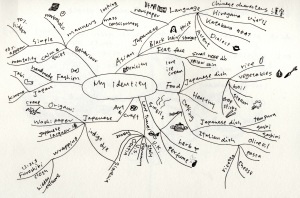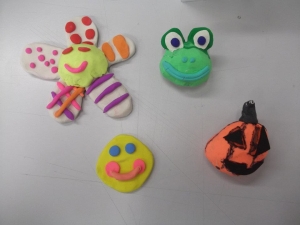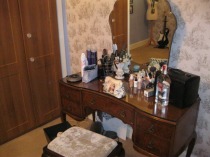How do men and women differ in the way they view the design around them?
For this assignment, I needed some preparations before having interview sessions. Making questions and structure of the interview took a bit long time but I enjoyed preparing those. I also made a formal consent form for using their photographs. Anyhow I think I could enjoy this assignment the most in all other assignments I had.
I chose “How do men and women differ in the way they view the design around them?” from the 10 topics prepared. I have been interested in the difference in the way of thinking and viewing between men and women.
I just remembered some examples that were depending on the way of viewing or the way of thinking. For example, in general, men like cars or computers but women do not like those that much. Women probably like visibly pretty things or art related things and they choose studying art even for their higher education as I could see a lot of female students in my art school but a few male students. Conversely in civil engineering faculty at University of Dundee, there are a lot of male students but a few female students. There would be many reasons like working as a civil engineer sometimes needs to work outside, so it might be hard for women, etc. And also men probably think studying practical things should stand them in good stead rather than studying art.
Men have a different order of priorities, and women have a different one as well.
For another example, if there is a girl who is always said “fashionable” or “pretty” by other girls. What is interesting is that many boys think she is neither “fashionable” nor “pretty”. Moreover the boys think something worse like “strange fashion” or “too much make-up”. Anyhow I have been interested in the differences in the way of viewing by men and women.
I started mind mapping to decide a design thing that I would chat about in the interview sessions.

Interviewees might not be designers or design students, and also I did not expect any nice and cool answers how they think about design.
I thought to look at a design thing that would be able to encourage people to talk their own unique story or anecdote. It means I thought “the design around them” should have been common things or common designs in daily life that everybody knew and saw everyday. A mobile phone? Hanger hooks? A magnetic knife rack? An electric kettle? Design of a passage of a shopping mall? Soon after I suddenly decided – “OK, I will talk about toilet.” Everybody must use toilet everyday and everybody must know toilet.
I asked my friends to introduce their friend’s friend or flat mate’s friend to me. I must say thank you to all interviewees and my friends who asked people to have my interview. Thank you so much!
Before the interview, everybody asked me “What kind of interview? My friend keeps asking me.” or “What is the question?” I think everybody got tense or nervous when they heard “interview” even though I explained it would be just like a chat. As I should do semi-structured interview, I tried to interview people like natural conversation such as a chat instead of mechanical Q&A session. I imagined radio or TV shows. I really think well-known presenters are skillful. They listen to guests or interviewees carefully, make good questions to receive good answers at the right moments, and adjust to the situation.
I interviewed people in their flat, in a café, and my flat with a cup of coffee, soup, or chips in a very relax mood and actually we laughed a lot. I really enjoyed talking to new people about toilet even though it was a bit weird topic for the first conversation. I hope every interviewee enjoyed my interview.
Questions
– Can you draw your toilet? Do you like that? How do you like that?
– Have you ever been to any other countries? Where have you been?
– Have you ever had any trouble with toilet during the trip or anytime?
– Can you draw the worst toilet you’ve ever seen in your life?
Do you remember how bad that was?
– What do you think about different styles or types of toilet
such as a hole in the ground or a toilet in the bush?
– What do you think about the traditional Japanese toilet? (picture showed)
– Have you seen any different kind of toilet in the UK?
– What do you think about modern Japanese toilets? (pictures showed)
– Do you want to try the electric seat? Would you like it?
– Do you prefer to keep the toilet lid closing? Any reason?
– Which do you like the most in some designs of toilets? (pictures showed)
– Do you think the toilet is important thing in your house?
– Can you draw your dream toilet?
– What do you think about the toilets of unusual design? (pictures showed)
However I set the questions and the order of questions, I changed the order according to the atmosphere and the flow of the conversation. I did interview sessions on individual basis but I summarize the answers in order below.
Interviewees
Person 1 (f): Lucie / female British – from England / 1st year art student
Person 2 (f): Woosung / female Korean – from Busan / Social work Master student
Person 3 (m): Zameer / male Pakistani – from Islamabad / Finance Master student
Person 4 (m): Rosko / male British – from Dundee / Sports instructor
Person 5 (m): Kevin / male British – from Scotland / professional actor
Person 6 (f): Ruth / female British – from England / professional dancer
(m): male, (f): female
Well, I will ask you about strange questions but I hope you like.
– First of all, can you draw your toilet? (I asked Person 4, 5, and 6 only)

Person 4 (m)

Person 5 (m)

Person 6 (f)
Thank you. This is my toilet. I just took a photograph this morning.

– Do you like your toilet? Actually I like mine. How do you like your toilet?
Person 4 (m): yeah, why not. It’s comfortable, tidy and clean. My flat mate and I are clean people.
Person 5 (m): Yes! Of-course. The lid of the toilet, it closes by itself slowly. I like that!
Person 6 (f): Why not. I like that. We just had a new bathroom last year.
– Have you ever been to any other countries? Where have you been?
Person 1 (f): Yes, I’ve been to mostly Europe.
Person 2 (f): Yes, I went to China, Japan, the US, the UK, Ireland, France, Belgium, Sweden, Botswana, Italy and Spain. I went to the US with my tutor as a study trip.
Person 3 (m): No, I’m from Pakistan, so only the UK.
Person 4 (m): Spain, Canada, and the US. Not Asian countries yet but I’d love to go to Japan in near future.
Person 5 (m): Japan, Australia, France, and Italy.
Person 6 (f): France, Italy, Portugal, Morocco, Sweden, Germany, India, China, Uruguay, Argentina, the US, Canada, Dubai, Austria, Ireland, Wales, and Scotland.
– Have you ever had any trouble with toilet during the trip or anytime?
For example, you didn’t know how to use or you felt uncomfortable… or any interesting story about toilet?
Person 1 (f): In Poland, I stayed at a hostel and in the toilet there was no paper and the floor was plastic. And in France, in a public toilet there’s just a hole! Those were not modern at all.
Ah, I remembered the toilet at the Leeds festival in 2009 – it was the worst one! There’s a hole in the floor of the temporary toilet, and you could see everything below. Of-course it was so smelly and dirty – horrible! And at that festival, a girl fell down into the cesspit head over heels when she tried to pick her purse she dropped! Fire engines came to rescue her and she became to be called “poo girl”!
Person 2 (f): I didn’t have any trouble but even in the hotel bathroom, I don’t sit on the seat for hygiene. I don’t want to sit on the toilet seat that someone who I don’t know sit.
Person 3 (m): Not really but I’m a Muslim and I really care about the cleanliness so I don’t sit on the toilet seat for hygiene. Or, I put toilet paper on the seat then sit. In my country (Pakistan) we use a traditional style of toilet that doesn’t have seat. One thing I can’t stand is the position of the pool of western toilet. It splashes up the water! Pakistani toilet has the pool at front part so it doesn’t splash.
Person 4 (m): Well, the temporary toilet at festival is awful. Just a huge hole in the ground and there’s no paper. You need to bring your paper in.
Person 5 (m): Not at all.
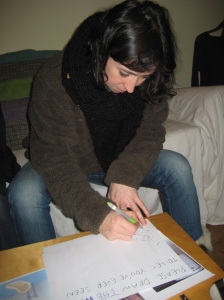
Person 6 (f): I experienced many different types of toilets in the world. In India, the toilets were separated for local Indian people and Westerners. For local people there’s no seat to sit on.
And in Portugal, there was a strange toilet I saw. The seat turned 360° and I still don’t understand the reason why.
In Argentina, the common toilet has a pipe where the dirt goes in front area. If you sit on the seat, you could see, but the pipe is incredibly dirty and Argentina is always hot, so it’s so disgusting.
– Can you draw the worst toilet you’ve ever seen in your life? (I asked Person 4, 5, and 6 only)
– Do you remember how bad that was?

Person 4 (m): A huge hole in the ground and you can see everything under your feet! Smelly.
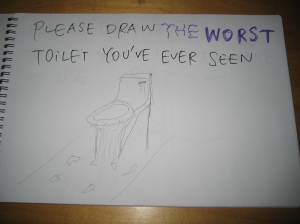
Person 5 (m): Sticky toilet in bars or at festivals. Pieces of paper were scattered everywhere.

Person 6 (f): No light. No toilet roll. Cockroaches and sanitary towels were on the messy floor. At a street café in India. Uuugh!!
I remember that one of my teachers at high school went to Egypt for his honeymoon. He and his new wife joined a packed tour by bus to visit the Great Pyramid of Giza and Sphinx. He suddenly got a serious stomachache but there was no toilet in the desert. He was totally in emergency so he did behind the pyramid.
And I heard about a public toilet in China from my Japanese friends who visited the Great Wall. The public toilet beside the Great Wall did not have any door or any partition. Two people should squat on the toilet face to face. And that toilet is just like a hole in the ground. There’s no seat for sitting. The Great Wall is one of the well known UNESCO World Heritage Sites.
In 17th century France, the citizens were throwing the dirt of the toilet away from the windows.

– What do you think about those?
Person 1 (f): I could imagine it would happen in small countries or developing countries.
Person 2 (f): yes I heard similar stories!
Person 3 (m): It depends on culture or situation. I could understand the differences.
Person 4 (m): I think I need to be open-minded to experience the difference in other countries.
Person 5 (m): Of-course there are so many different styles.
Person 6 (f): I think there are so many different styles or types of toilet in the world. I could go in the forest or bush if there’s no toilet. In old times, everybody did like that.
Also in old times in Edinburgh, people were throwing the dirt away from the windows and it went down to Princes street!

(Photograph from TOTO)
– What do you think about this traditional style of Japanese toilet?
Some people say this type of toilet makes your legs stronger.
Person 1 (f): It’s very different. I’ve never seen it before but I could guess you should squat.
Person 2 (f): I like it. You don’t have to sit on the seat. We still have same type of toilet in Korea – maybe Japanese company made it.

Person 3 (m): It’s very similar to Pakistani toilet. There’s no seat and you need to squat. As I told you, Pakistani toilet has the water pool at front part. And the material of the toilet is porcelain. Its smooth surface doesn’t allow the dirt to stick. I like that.
Person 4 (m): Cool! Isn’t it an old fashioned Japanese toilet? Yes, that’s it. I saw it on TV or Internet.
Person 5 (m): Ah, it’s Japanese toilet. I saw and used it when I travelled in Japan. I can see a button on the wall. It’s old, but technological.
Person 6 (f): I’ve never seen it.
Actually when I came to the UK for the first time long time ago, I was so surprised with the black coloured toilet seat. It still scares me. I don’t know why but I don’t like to sit on that. I just wonder who designed that black seat.
– Have you seen any different kind of toilet in the UK?
Person 1 (f): No I’ve never seen any different toilets. Well, I think that black coloured seat is a very traditional British style toilet. In old times, there’s a water tank over the head and you pull the chain to flush. Some people are still using that type of toilet today.
Person 2 (f): No, I’ve never seen any different one in the UK.
Person 3 (m): No. But you can see a Pakistani style toilet in Dundee mosque.
Person 4 (m): No, I’ve only seen common Western toilets here.
Person 5 (m): No, just usual ones.
Person 6 (f): Not strange one, but I still see an old type of toilet with a tank and a chain. The toilet of my friend in France, it was my favourite! It was in the garden, I mean outside. If you finished using, you should cover with sawdust. It’s very eco-friendly. You could hear the birds singing and feel nature. Ah, in somewhere I saw a ski jump toilet. The wall paper is the scenery of Alps and you put your feet into sky. Maybe it’s by Japanese company.
(Then she sent me a link of ski jump toilet.)

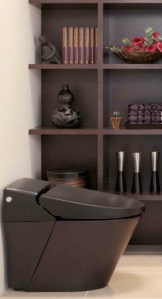
(Photographs from LIXIL/INAX)
Those are common toilets in Japan today.
– Do you like them? What do you think?
Person 1 (f): Very modern. It’s not like in a bath room, it’s like in a living room.
Person 2 (f): Too stylish. It looks like in a living room. You could read books there.
Person 3 (m): Clean and modern. I think Japanese has a modern sense of design and high technology. I think those modern toilets reflect the levels of people for example, how educated and how rich they are, and what kind of house they live in. They might reflect the personality as well. It seems easy to clean those toilets.
Person 4 (m): Wow! Cool! Technological. You could sit back and relax on them like furniture. Interesting and dynamic shapes.
Person 5 (m): Very modern and aesthetic.
Person 6 (f): Like a salon. It’s modern but it would only suit for the modern houses.
In Japan, electric seats of toilet are very common today. In my parents house there are 2 toilets and those have electric seats. Even in winter you can sit warm. It is made as eco-friendly with a very cutting-edge technology. When a person comes closer, a human sensor activates the heater quickly and the lid will open automatically. Toilet paper is unnecessary. The warm water shower and the dryer will wash and dry everything for you. You just sit on the seat and do your business then go. It flushes automatically. Of-course you can change the temperature and power of water or air as you want. Some Japanese people say using toilet paper is not enough to clean and not ecological however I am not sure if it is correct or not. Individually I do not like the auto flushing since I flushed my earring.

– Do you want to try the electric seat? Would you like it?
Person 1 (f): Ehm, I wouldn’t try. I’m ok with paper. I think it takes a long time to get used to. And it’s almost like a hairdresser – and too much functions.
Person 2 (f): I don’t like the seat heating. I know it’s electric, but its warmth is like somebody else was sitting here just a second ago. I don’t want to imagine. Using shower is ok, but I don’t want to pay for this expensive seat.
Person 3 (m): I wouldn’t use but I understand it helps us to be clean.
Person 4 (m): Why not. Electric, that’s amazing! I like the idea of eco-friendly without paper.
Person 5 (m): Yes, why not. It must be comfortable. I like high technology.
Person 6 (f): No, I wouldn’t use. That’s not for me.
I heard from some male friends, they want to keep the toilet lid opening at always otherwise they need to open every time when they use. But female friends say the lid should be closed for hygiene because there are a lot of invisible bacteria in the air of the bathroom.
– Do you prefer to keep the toilet lid closing? Any reason?
Person 1 (f): Yes, I do. I want to be polite. Because I’m English, I think to close the lid is a kind of etiquette.
Person 2 (f): I prefer to keep closing but I don’t really mind for my toilet. And I don’t want to touch the lid in a public toilet. Also if the lid were closed in a public toilet, I would suspect that someone has not flushed, and I would flush first before opening the lid.
Person 3 (m): I don’t close the lid but put the seat down. To shut the smell, maybe I should close the lid.
Person 4 (m): I might not close. I prefer to close but if I need to let air out, I would open.
Person 5 (m): I close. Since I saw the Japanese electric seat when I travelled, I close. I think the design changed my habit.
Person 6 (f): I prefer to close but I can’t be bothered, so I don’t close.

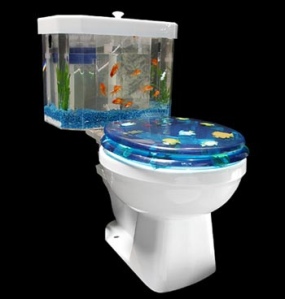
A Swarovski stones covered toilet and an aquarium toilet.
– What do you think about those?
Person 1 (f): I think Swarovski stones are unnecessary at all. This design is not for purpose. Fish one looks ridiculous.
Person 2 (f): Wow, Swarovski stones one is gorgeous, but I won’t pay for it. And I think the aquarium one is bad design. A toilet doesn’t need to be special like that.
Person 3 (m): Swarovski one looks very expensive. Teenage girls might like that. There’s no special technology, it’s just covered with stones. Mature people wouldn’t use the Swarovski one. But the aquarium one would be good to make kids sit on the toilet properly. Anyhow those two would be used to attract people or feel good to show how they are rich.
Person 4 (m): Is that customized? I never choose Swarovski toilet even if it’s free. That’s just too much. But girls and maybe gay guys like.
The aquarium one is very nice. It would work to make kids sit on the toilet. They could sit backward and enjoy seeing fish.
Person 5 (m): Wow…. Swarovski… I hate that. I don’t understand. I like the aquarium one. It’s nice. I could see a kind of responsibility by looking after the fish, and I like the idea of looking at the nature.
Person 6 (f): Covered with Swarovski stones… it’s totally insane. I hate that. And I hate the fish one. It’s something like plastic and an extension of toy.
– Do you think the toilet is important thing in your house?
– Which do you like the most in all of them?

Person 1 (f): Yes the toilet is important. But I don’t care about its looking. I can’t use lots of money to have gorgeous expensive one. I prefer the basic British common toilet.

Person 2 (f): The toilet is important, but, again, I think it doesn’t need to be special. I don’t want to use money for a high technology toilet. I like the normal toilet but clean one.
Person 3 (m): Of-course the toilet is very important. It’s a kind of sacred place for myself. I usually smoke and read there. I don’t have to care about anything in the toilet. I don’t like a toilet in the “nature”. I can’t go into bush. I remembered when I saw a house in London. The kitchen was very small but the bathroom was huge. That means, British people think the toilet as important thing rather than food! If I had lots of money, I would have one traditional toilet for me, and one modern electric one for guests who come to my home party.

Person 4 (m): Yes, the toilet is important. That’s my own place. I could think something alone in the toilet, and flat mates or anybody never bother me. Well, if I had enough money I would choose the Japanese high technology one. I prefer that the most. That should be convenient and user friendly.
Person 5 (m): Yes, the toilet is very important. I think the toilet is a symbolic thing of civilization. We produce things and waste (eat), then we flush them into the toilet, and finally those of them disappear. I think Japanese modern one is very aesthetic and new but maybe cranky.

Person 6 (f): The toilet is important. Well, Japanese modern toilet is ok but if there were that modern toilet in an old flat, that wouldn’t suit for the atmosphere. I prefer the traditional one or even the old style with a tank and a chain. I want to go back in time.
– What is your dream toilet?
– Can you draw a nice toilet you would like to have or use? (I asked Person 4, 5, and 6 only)
– Give me some key words to explain that.


Person 4 (m): shiny, high technology, remote controllable, heating, lights, candles, aquarium, and drinking whiskey in the toilet!

Person 5 (m): controller on the sheet, high technology, projector, and watching movie in the toilet.

Person 6 (f): clean, fine porcelain and a chain, back in time, bookshelf, lots of books, natural daylight. Or, nature, compost toilet, sawdust, birds, trees, and flowers.
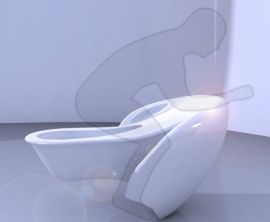

OK, so I’m going to ask you the final question.
– What do you think about those toilets?
Person 1 (f): Those are unusual shapes. Those don’t look comfortable.
Person 2 (f): I have no idea for the white one, but green one is small and cute. Are those for any special purpose?
Person 3 (m): I think those are for disabled people. Those looks like barrier free toilets.
Person 4 (m): The white one is like a motorbike. Interesting. Looks comfortable and good for bad backs. Maybe it’s practical somehow. Mobile toilet? And green one is nice. Maybe it’s good for any ages. Good designs.
Person 5 (m): I like white one. It’s beautiful. It’s just like a sculpture. It looks practical and functional.
Person 6 (f): Weird shapes. I’ve never seen those before.
The white one is multiuser toilet designed by Nelson Ayala, in collaboration with Ana Maria Gordillo. Disabled people who is using wheelchair can use it, too.
The green one is also a multiuser toilet designed by Cooler Solutions inc in Canada. It could be used as a portable toilet or bedpan for somebody sick in bed who cannot move.
– Any comments?
Person 1 (f): I have no idea but I think those look supportive.
Person 2 (f): Good idea.
Person 3 (m): I’ve never seen those before but I thought those were for disabled people.
Person 4 (m): Nice. That’s very good idea. Those are modern and beautiful. Apart from usual disabled toilets.
Person 5 (m): Cool. That’s very nice. I’ve never thought context. The green pot is like IKEA’s coffee pot.
Person 6 (f): Wow. A modern bedpan. Green one is small and discreet.
If you knew the purpose of the thing, you would be able to understand why this existed. But I could find some differences between men and women in the way of viewing things. You differ in the way you view something especially at first glance.
Well, thank you very much for having my interview. I really enjoyed chatting!


Throughout the interviews, I vaguely found small differences.
Men would look at the function or practicality of design as all three men answered the aquarium toilet was nice idea to make kids sit properly. But all three women answered the aquarium toilet was ridiculous or bad design. Probably women might think the image of colours or shapes at first sight. If you think about the purpose of this design, it could be for kids as men answered. For example if kids could be trained to sit properly and parents became happy with that, it could be a good design. I think a good design is not only with beautiful colours or shapes.
And men like gadget things, high technology, something interesting such as an aquarium toilet, an electric sheet, or luxury facilities in the toilet. I think men see design or functions of the thing itself and do not care much about if the looking matches with other things. Also they attach importance to the feeling or atmosphere how comfortable it is when they use the toilet.
However women mainly think about the cleanliness, they see the harmony of the design with other things. Since all three women preferred to choose the normal toilet, I thought women would not really care about the looking. But then I thought about it again, and realized that maybe women did not see “design” but “looking”. I think some people might think good design should be always good looking, too. But I do not think so. If they looked at design, they would have mentioned about the functions some more.
And another difference is, men do not care about the cost of the gadget thing or high technology thing, but women care as they answered “I don’t want to use money for it.” It reflected that women were used to think about housework.
I enjoyed the interviews but I still think making good questions is not easy. Good questions can derive good answers. This is like handling a bit of solder on the metal.
After I collected and summarized the answers of my interviewees, I discussed with my friends about the findings though I was worrying if my “topic” was appropriate for lunch time at a café!
Michelle Ho took a topic of “What does jewellery mean to wearers, sellers and makers?” I liked her approach to the topic. It was different from mine. She asked the interviewees to make a mind map. And then she showed the interviewees some pictures of jewellery on a book and asked them to choose good one and bad one. I think that could help her to know what people feel or think about jewellery with different eyes.
We are learning jewellery making. At least we have slightly different eyes to view jewellery or jewellery making technique from those who are not familiar with jewellery making. This does not mean good or bad but just different.
To be honest I did not choose that topic on purpose because I am a too serious person and I thought it was too heavy to think about. I might take really a long time to make good questions.
As I wrote on my blog before, I have been having a big contradiction in my mind – Why am I making jewellery with precious metals even though I am an ecologist?
Who starts the flow?
Did a wearer start wanting to wear/own a piece of jewellery?
Did a seller start wanting to sell a piece of jewellery?
Did a seller start asking a maker to make a piece of jewellery?
Did a maker start wanting to make a piece of jewellery?
Did a maker start wanting to let a wearer wear a piece of jewellery?
Same thing can be said for the fashion clothes. Who wants to catch up with the fashion? Wearers? Sellers? Makers?
Who creates the fashion? Street kids? Celebrities? Fashion designers?
Who is encouraging the fashion? Any purpose?
money – business – pure enthusiasm for fashion – policy or creed
If those of them were balanced well, it would seem very successful.
Anyhow, this assignment gave me a good opportunity to practice interviewing people and also gave me a hint to approach to my big theme. The thing I learned from this series of assignments is that I should know and appreciate the differences which exist everywhere. And I should not measure something only with my ruler.








